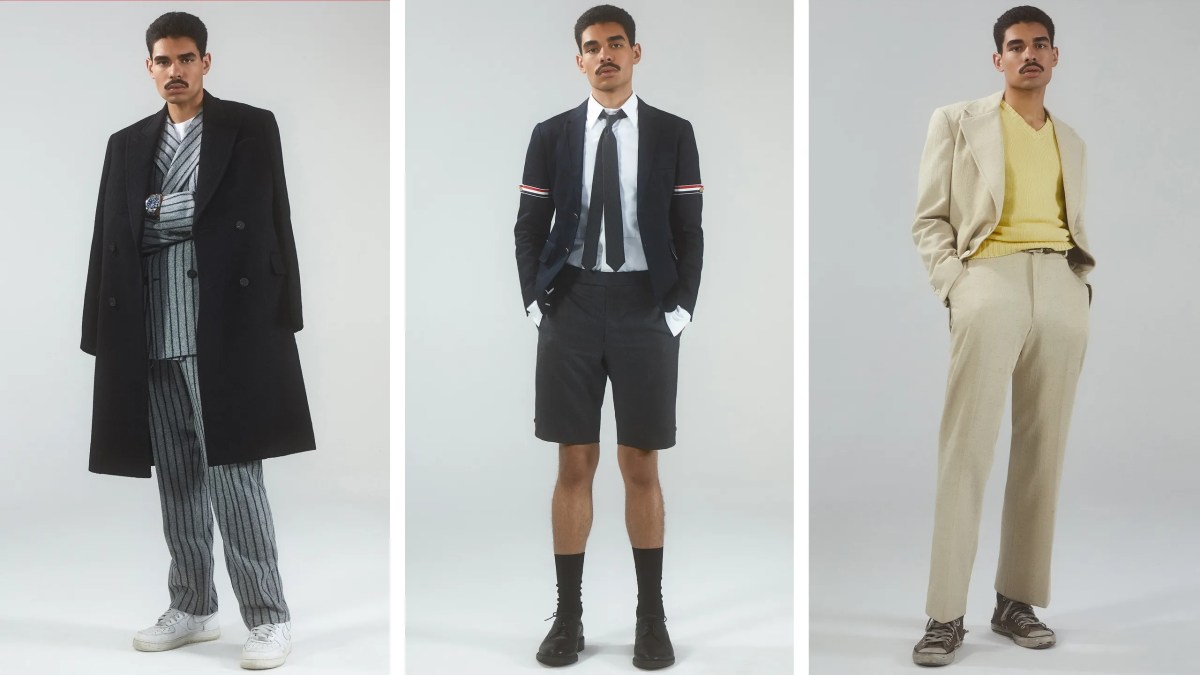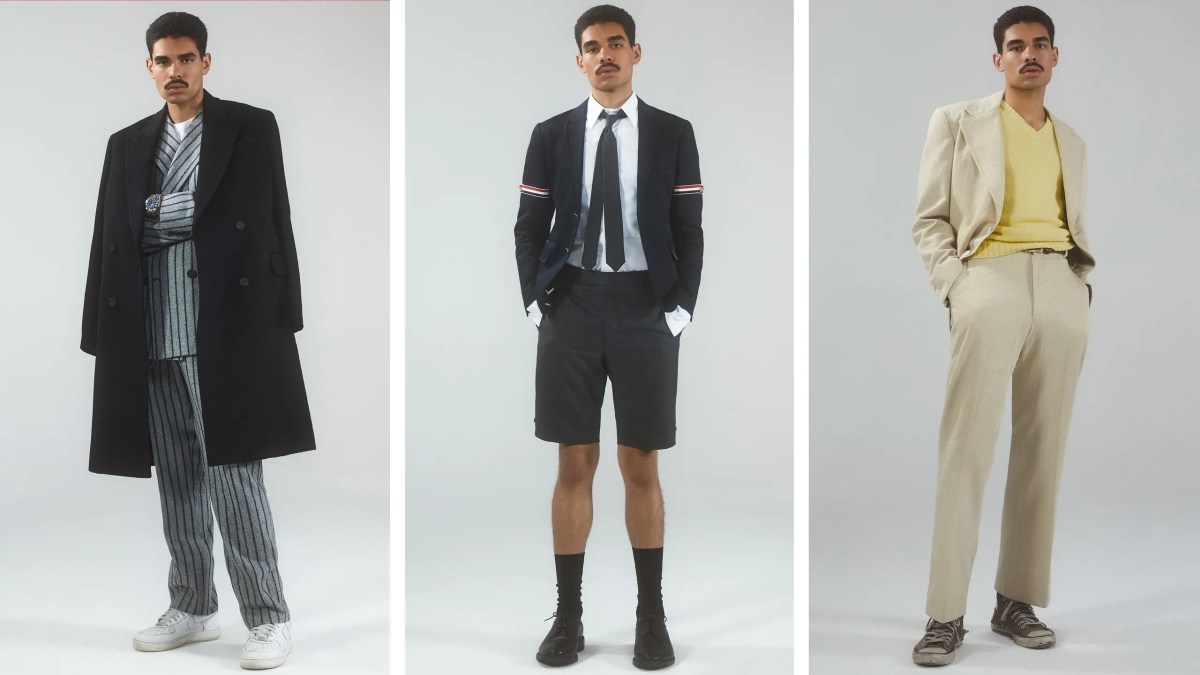Dress coat meaning goes beyond simply a coat for dressing up; it’s a journey through history, style, and sartorial elegance. This guide delves into the nuances of dress coats, exploring their evolution, various types, appropriate occasions, and essential care tips. We’ll uncover the distinctions between a Chesterfield, a Peacoat, and an Ulster, examining their unique features and the materials that make them stand out.
Prepare to become a connoisseur of this timeless garment!
From the formal grandeur of a wool Chesterfield to the rugged charm of a tweed overcoat, dress coats offer a spectrum of styles to suit diverse tastes and occasions. Understanding the subtle differences in cut, fabric, and length allows you to make informed choices, ensuring your dress coat complements your personal style and the event at hand. We’ll explore the rich history of the dress coat, tracing its evolution through different eras and its lasting impact on fashion.
Understanding the Dress Coat
The dress coat, a cornerstone of sophisticated menswear (and increasingly, womenswear), transcends mere outerwear; it’s a statement of style, history, and occasion. This guide delves into the multifaceted world of dress coats, exploring their definitions, types, materials, styling, and care.
Defining “Dress Coat”, Dress coat meaning
A dress coat is a formal or semi-formal coat, typically longer than a jacket, designed to be worn over a suit or other smart attire. Its history is deeply intertwined with menswear evolution, reflecting changing social norms and sartorial preferences across centuries. Unlike more utilitarian coats like overcoats or trench coats which prioritize practicality and weather protection, dress coats emphasize elegance and refined appearance.
Historically, dress coats emerged from the evolution of frock coats and other formal outerwear of the 18th and 19th centuries. These early iterations often featured elaborate details and signified social status. Over time, styles diversified, leading to the variety we see today. Compared to an overcoat, a dress coat is generally more structured and tailored, featuring finer materials and more sophisticated details.
Trench coats, designed for functionality and weather resistance, typically have a more rugged aesthetic and are made of heavier, water-resistant fabrics.
Typical features of a dress coat include a length that falls at or below the knee, the use of high-quality fabrics such as wool, cashmere, or tweed, and a structured silhouette. Buttons, often in a distinctive pattern, are a common feature, although some styles might feature closures other than buttons. The overall fit is generally tailored and emphasizes a sharp, refined silhouette.
Types of Dress Coats
Numerous styles of dress coats exist, each with its unique characteristics and suitability for different occasions. Understanding these variations is crucial for selecting the right coat for your needs.
| Coat Type | Material | Typical Length | Formal vs. Informal |
|---|---|---|---|
| Chesterfield | Wool, cashmere | Knee-length or longer | Formal |
| Peacoat | Wool, Melton wool | Hip to thigh length | Semi-formal to informal |
| Ulster | Heavy wool, tweed | Knee-length or longer | Semi-formal |
| Revere | Wool, cashmere | Mid-thigh to knee-length | Formal to semi-formal |
Dress Coat Materials and Construction
The materials and construction techniques employed significantly impact a dress coat’s appearance, durability, and overall quality. High-quality dress coats often utilize intricate construction methods.
Common materials include wool (various weights and weaves), cashmere (for luxurious softness), and tweed (for a textured, rustic look). The choice of material influences the coat’s drape, warmth, and resistance to the elements. Cashmere offers unparalleled softness and warmth, while wool provides durability and water resistance. Tweed adds a distinct visual texture. High-quality dress coats often utilize techniques like hand-stitching and canvas construction to create a superior fit and drape.
So, you’re wondering about “dress coat meaning”? It usually refers to a formal, often long coat worn for elegant occasions. But did you know the term pops up in gaming too? Check out this video game example, dress coat video game , to see how it’s used in a different context. Ultimately, understanding “dress coat meaning” depends heavily on the context—fashion, gaming, or something else entirely.
These methods, while more labor-intensive, result in a garment that holds its shape and provides exceptional longevity.
A simplified flowchart illustrating the dress coat construction process might include steps such as pattern making, fabric cutting, canvas construction (if applicable), assembling the coat pieces, attaching the lining, adding buttons and finishing touches, and final pressing.
Dress Coat Styles and Occasions
The versatility of the dress coat allows for its incorporation into a range of outfits and occasions, from formal events to more relaxed settings. Understanding appropriate styling is key to maximizing its impact.
- Formal Events: A Chesterfield coat paired with a tuxedo or a dark suit.
- Business Settings: A navy or charcoal wool dress coat worn over a suit for a professional look.
- Casual Wear: A shorter peacoat or a tweed coat styled with jeans and a sweater.
Etiquette dictates that a dress coat should be appropriately matched to the occasion and the rest of the outfit. Avoid wearing a highly formal coat to a casual event and vice versa. Proper fit and attention to detail are paramount. A well-fitting coat enhances the overall appearance.
Dress Coat Care and Maintenance
Proper care and maintenance are essential for prolonging the life and preserving the appearance of a dress coat. Regular cleaning and appropriate storage are crucial.
Cleaning methods depend on the fabric; dry cleaning is often recommended for delicate materials like cashmere. Regular brushing removes dust and debris. Storage involves hanging the coat on a padded hanger in a cool, dry place, away from direct sunlight and moisture. Minor repairs, such as replacing a button or mending a small tear, can often be done at home or by a professional tailor.
So, you’re wondering about the meaning of “dress coat”—it usually refers to a formal overcoat, right? But let’s say you’re filming a stylish fashion show; you’d want smooth, high-quality footage, maybe using a compact drone like the dji flip drone only for those overhead shots. Back to dress coats: the context really matters when defining the exact meaning, depending on whether we’re talking about historical styles or modern interpretations.
The Dress Coat in Popular Culture and Fashion
The dress coat holds a significant place in both historical and contemporary fashion, appearing frequently in film, literature, and art. Its enduring appeal reflects its ability to convey sophistication and timeless style.
For example, Humphrey Bogart’s trench coat in “Casablanca” (while technically a trench coat, its iconic status illustrates the power of outerwear in shaping character and narrative), or the tailored coats worn by characters in period dramas, demonstrate the coat’s ability to communicate social status and personality. The evolution of dress coat styles can be traced through various periods, reflecting changing silhouettes, materials, and cultural influences.
A timeline could illustrate the shift from the long, flowing frock coats of the 18th century to the more tailored styles of the 20th and 21st centuries.
End of Discussion: Dress Coat Meaning

Ultimately, understanding the meaning of a “dress coat” involves appreciating its versatility and enduring appeal. Whether you’re navigating a formal gala or adding a touch of sophistication to your everyday attire, selecting the right dress coat is a statement of personal style and refined taste. This guide has equipped you with the knowledge to confidently choose, care for, and style this classic garment, allowing you to make a lasting impression wherever you go.
FAQs
What’s the difference between a dress coat and an overcoat?
Dress coats are generally more structured and formal, often made from finer materials. Overcoats tend to be more casual and practical, prioritizing warmth and durability.
So, a dress coat means a formal coat, right? Think of it like deciding who gets the first choice – it’s kind of like a coin toss to determine the best look for a fancy occasion. You could say the decision of whether or not to wear a dress coat is a similar kind of choice, weighing the occasion against your personal style.
Can I wear a dress coat casually?
Yes, depending on the style. A less formal dress coat, like a tweed or shorter length, can be styled casually with jeans and a sweater.
How do I clean my dress coat?
Check the care label! Many dress coats require professional dry cleaning. For minor spots, consult a stain removal guide specific to the coat’s material.
What is a frock coat?
A frock coat is a long, formal coat with tails, typically worn in the 19th century. It’s a historical predecessor to many modern dress coat styles.
